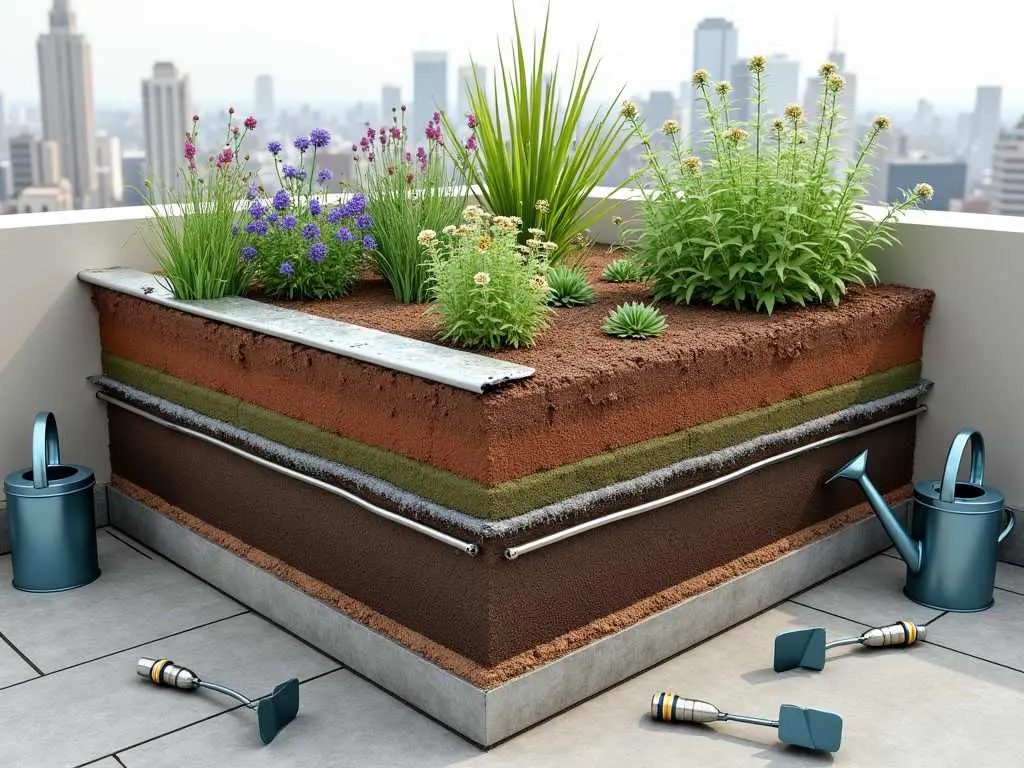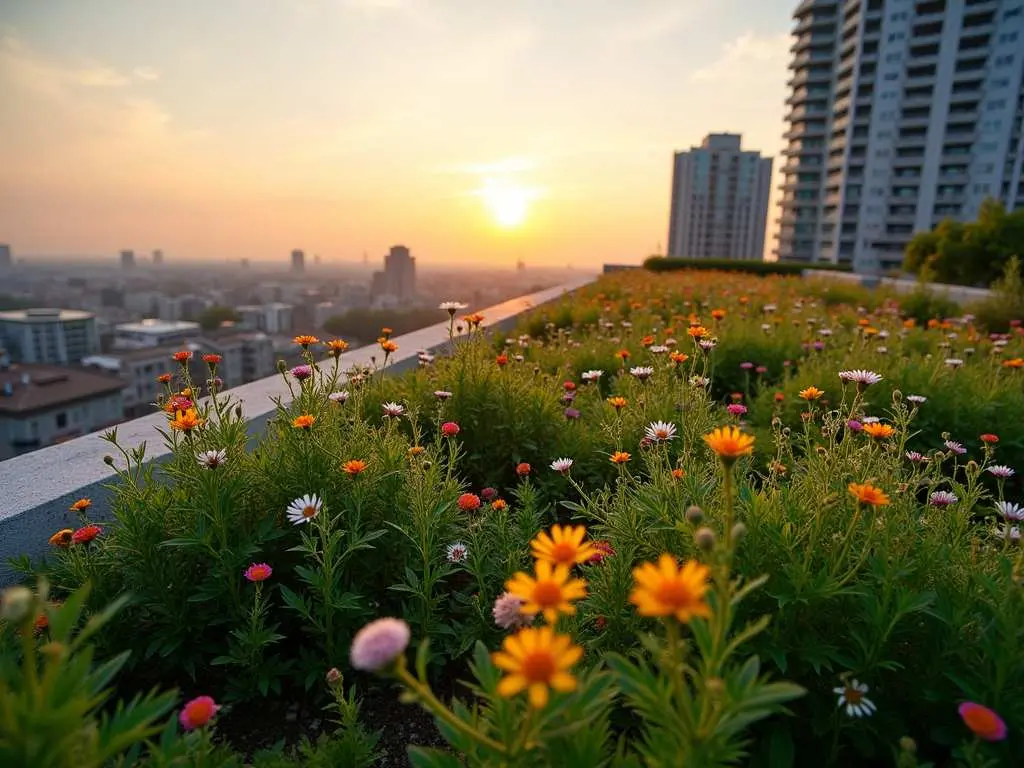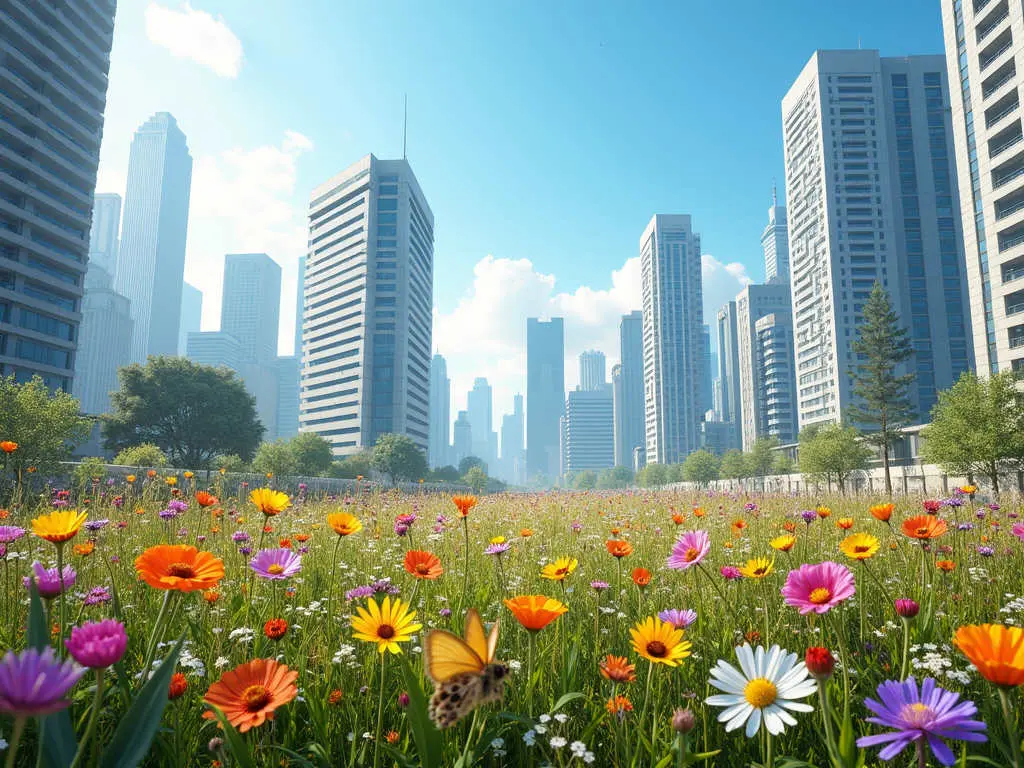In the dense fabric of urban life, where concrete dominates and green spaces are scarce, a rooftop wildflower meadow offers a transformative solution. By turning unused rooftops into vibrant ecosystems, you can create a sanctuary that blends sustainability, biodiversity, and aesthetic appeal. This guide will walk you through the process of planning, designing, and maintaining your rooftop meadow, inspiring creativity while addressing practical considerations.
Jump to:
Why Create a Rooftop Wildflower Meadow?
Rooftop meadows are more than just beautiful spaces; they are ecological powerhouses. They:
- Combat urban heat islands by reducing roof temperatures and cooling surrounding air.
- Enhance biodiversity by providing habitats for pollinators like bees and butterflies.
- Improve air quality by filtering pollutants and producing oxygen.
- Manage stormwater runoff, reducing strain on urban drainage systems.
- Offer mental health benefits by creating tranquil spaces for relaxation and connection with nature.
Cities like New York and Singapore have embraced green roofs as essential elements of sustainable urban planning. By following their lead, you can contribute to a greener cityscape while enjoying your personal oasis.
Step-by-Step Guide to Creating Your Rooftop Wildflower Meadow

1. Planning: Laying the Foundation
Assess Structural Viability
Before starting, consult a structural engineer to evaluate your roof’s load-bearing capacity. A meadow requires soil, plants, and water, which add significant weight. Ensure the roof can support these loads safely.
Understand Local Regulations
Check local building codes and permits. Some cities have specific requirements for green roofs, including safety measures like railings or fencing.
Define Your Goals
Ask yourself:
- Do you want a low-maintenance space or an interactive garden?
- Are you focusing on aesthetics, biodiversity, or both?
- Will the space serve as a retreat or include functional areas like seating?
These questions will guide your design choices.
2. Design: Bringing Your Vision to Life

Choose the Right Plants
Wildflowers are ideal for rooftop meadows due to their resilience and low maintenance needs. Opt for native species adapted to your local climate—they require less water and attract local pollinators. Consider:
- Perennials like echinacea or black-eyed Susan for year-round interest.
- Grasses such as fescue for texture and erosion control.
- Sedums for drought resistance.
Layering for Success
A successful rooftop meadow involves multiple layers:
- Waterproof Membrane: Protects the roof from leaks.
- Drainage Layer: Prevents waterlogging.
- Filter Fabric: Keeps soil in place while allowing water to drain.
- Growing Medium: Lightweight soil mix tailored for rooftop conditions.
- Plants: The stars of your meadow!
Incorporate Design Elements
Add pathways using decomposed granite or stepping stones to create access without disturbing plants. Include seating areas or trellises for shade and relaxation.
Visualize with Tools
Use tools like 3D modeling software or sketches to plan your layout. This helps in visualizing plant placement and optimizing space.
3. Installation: Building Your Meadow

Prepare the Roof
Clean the surface and install the waterproof membrane and drainage system according to professional guidelines.
Add Soil Layers
Spread a lightweight growing medium evenly across the roof. Ensure it’s deep enough (typically 4–6 inches) to support root systems without overloading the structure.
Planting
Arrange plants based on their sunlight and water needs. Group drought-tolerant species together and place taller plants strategically to provide shade for others.
4. Maintenance: Keeping It Thriving
Rooftop meadows are relatively low-maintenance but still require care:
- Water during dry spells, especially in the first year as plants establish roots.
- Remove invasive weeds to prevent competition with wildflowers.
- Fertilize sparingly with organic options to support growth without harming pollinators.
- Conduct seasonal inspections to check drainage systems and plant health.
Creative Inspiration: Thought-Provoking Ideas
- Imagine your rooftop as a canvas where art meets ecology—how can you use colors and textures creatively?
- What if your meadow became a community hub? Could it host workshops on urban gardening or biodiversity?
- Think of your meadow as an ecosystem—how might it interact with local wildlife?
By viewing your rooftop as more than just a garden, you open doors to endless possibilities.
People Also Ask
1. What are the best plants for a rooftop wildflower meadow?
Native wildflowers such as lavender, echinacea, black-eyed Susan, and drought-tolerant grasses like fescue are excellent choices due to their resilience in rooftop conditions.
2. How do I ensure proper irrigation on my rooftop meadow?
A drip irrigation system is ideal—it delivers water directly to plant roots while minimizing waste through evaporation.
3. Can I combine solar panels with a rooftop meadow?
Yes! Green roofs reduce roof temperatures, enhancing solar panel efficiency by up to 16% while providing dual environmental benefits.
Conclusion
Transforming your rooftop into a vibrant wildflower meadow combines creativity with sustainability. By following this guide, you not only enhance your living space but also contribute to urban biodiversity and climate resilience.
References
- US EPA – Green Roof Benefits
- Ecological Solutions – Urban Meadows
- Intermountain Roofscapes – Meadow Green Roofs
Disclosure
Our content is reader-supported. This means if you click on some of our links, then we may earn a commission. Commissions do not affect our editor’s opinions or evaluations. Learn more about our editorial process.

About the Editorial Staff
The Curvspace editorial team comprises a diverse group of experts on intermediate and threshold spaces in homes and workplaces. Architects and interior designers, civil engineers and artists, environmental and behavioral psychologists, sociologists and anthropologists. All collaborate to create helpful content, that explores the full potential of these often-overlooked areas to enhance our daily lives.


